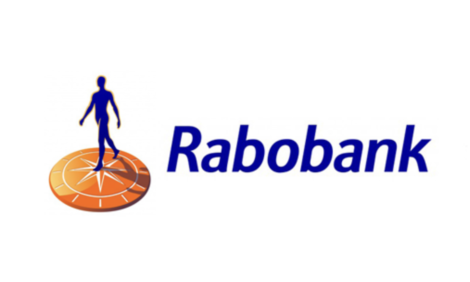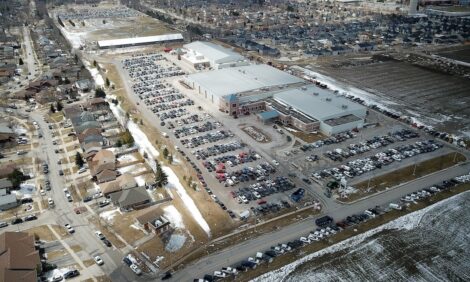



MLA: Weekly Cattle Summary
AUSTRALIA - This report is a collection of weekly cattle price summaries from each Australian territory by Meat & Livestock Australia (MLA).Queensland
Supply eases
Yardings in Queensland this week, as reported by MLA’s National Livestock Reporting Service, eased 11 per cent week-on-week. Dalby supply decreased 25 per cent , while throughput at Roma Store and Roma Prime markets was 18 per cent and 5 per cent higher, respectively. Toowoomba Elders yarded 9 per cent less, while Toowoomba Landmark offered only 370 head. Warwick cattle supply slipped 11 per cent week-on-week.
Quality affects demand
There was a very good yarding of heavy grown steers and bullocks at Toowoomba Elders, however there were limited supplies of well-finished cows. Toowoomba Landmark failed to yard heavy grown steers and bullocks in what was a mainly plain quality yarding. There were good numbers of commission buyers on hand at Roma Store sale, as well as several feedlot buyers displaying strong demand for better quality domestic feeder weight steers. Quality at Dalby eased, with many of the young cattle presenting in lean condition.
Prices generally decrease
Medium weight vealer steers to restockers were 2¢ higher on 163¢/kg. Light weight C2 yearling steers to restockers were 1¢ lower on 167¢, while D2s to restockers were 4¢ cheaper on 146¢/kg. Medium weight yearling steers to feed lost 3¢ to average 162¢/kg. Light weight yearling heifers to restockers were 3¢ cheaper on 128¢, while those to feed were unchanged on 133¢/kg. Light weight yearling heifers to processors eased 12¢ to settle on 133¢/kg.
Medium weight grown steers to feed were firm on 158¢, while heavy weight C3 lines to slaughter eased 4¢ to average 172¢, while bullocks to processors slipped 16¢ to 161¢/kg. Medium weight D2 cows to slaughter eased 1¢ to average 101¢, while D3 drafts lifted 2¢ and averaged 122¢/kg. Heavy weight D4 cows to slaughter eased 4¢ to settle on 138¢/kg.
Western Australia
High pasture levels aiding quality improvements
The weekend saw further rainfall recorded in areas to the south and east of Perth, some areas exceeding 40mm. This has added further longevity to the growing season in most of the traditional cattle rearing areas of the southwest, despite some disruption to hay production. Pasture levels remain very high, and this has been evident in the quality and higher weights of slaughter grades this season. Vealer weight in the south has come under some discussion, with the wet and cold conditions of spring having had some detrimental affect on weight and condition, with many areas requiring sun on their calves. Turn off levels remain high with solid booking levels remaining direct-to-works, while mustering activity in the north of the state are still at reasonable levels – particularly throughout the Murchison and Gascoyne areas. Live export activity also has been maintained in both the north and the south of the state.
Larger numbers in physical markets
Saleyard numbers increased this week, as would be expected at this time. Muchea continued to record good supplies of mixed quality pastoral cattle, while the southern sales included improved supplies of prime trade and heavy weight steers and heifers. Yearling store grades were marginally lower, with vealer supplies still limited. There was a weakening in processor demand for prime grass finished trade yearling steers and heifers, with both experiencing lower average prices. This was also the case in most heavy weight steer, bullock and heifer classes, despite an overall increase in the weight and quality of locally grown drafts. Store yearling quality and weight remained mixed. Restocker and feeder demand eased marginally and remained selective throughout the classes, while demand and prices for the limited supply of vealers remained similar throughout the weight classes. There continued to be solid weight and condition recorded in local cows. Weaker processor demand saw price reductions throughout the classes at all three markets.
New South Wales
Cattle numbers slip back
Overall consignments at MLA’s NLRS reported markets slipped week-on-week, however some markets showed considerable increases. Wagga gained 15 per cent , as Forbes and Tamworth eased 16 per cent in total. Gunnedah, along with CTLX Carcoar, slipped from 14 per cent to 19 per cent , as the hot and dry conditions lifted Scone by 28 per cent . Showers around the Armidale supply area caused numbers to decline 31 per cent , however the northern Casino market gained 21 per cent week-on-week. As the dry conditions continue in the western regions, consignments remain large at Dubbo, however failed to reach the highs recorded at the previous sale.
Quality remains mixed
Markets again reported mainly mixed quality offerings, as the Dubbo selling complex continued to yard percentages of plainer western cattle. Most markets reported good numbers of prime conditioned younger cattle, together with reasonable supplies of cows, with over 5,000 yarded. Grown steers and bullocks were well supplied, with around 1,760 suitable for slaughter. Yearlings continue to out supply most other categories, with 5,712 steers and 4,825 younger heifers sold.
Cheaper trends throughout
All categories of prime conditioned younger cattle sold to weaker trade and processor competition, as prices slipped 6¢ to 11¢/kg. The younger steers and heifers purchased by the restocker and lot feeders, lost from 3¢ to 6¢/kg. The increased number of grown steers to slaughter met weaker processor competition, as the heavier bullocks recorded the greatest falls. Prices ranged from 130¢ to 186¢/kg, depending on age and finish. The general run of heifers was 10¢ to 12¢ cheaper, averaging 144¢ after topping at 167¢/kg. Cows also struggled and sold 3¢ to 4¢ cheaper, as the plainer 2 scores averaged 107¢/kg. The better finished 3 and 4 score cows ranged from 102¢ to 155¢, with the higher yielding C muscles reaching 165¢/kg. Heavy weight bulls also trended cheaper.
South Australia
Numbers ease across all centres
Total yardings across MLA’s NLRS reported SA centres remained close to firm week-on-week, totalling 4,776 head. However, overall throughput was boosted due to the operation of the fortnightly Millicent sale, with all other markets actually reporting reduced numbers. Mount Gambier slipped 21 per cent week-on-week, while the SA Livestock Exchange saw its throughput reduce by 15 per cent . Numbers at Naracoorte eased 7 per cent for the first of the split sales, with young cattle being held on Tuesday and the cows and bull sale to follow on Friday.
Quality varies
Consignments of young cattle increased at Naracoorte this week, with most going to restockers. Mount Gambier saw a lift in demand for vealers, provided by strong competition between supermarket and processor buyers. Average prices generally met firm to cheaper trends across all weights and grades this week. At Naracoorte the better quality lines were less affected, but still showed a slip in price.
Quality was mostly mixed and all of the usual buyers were in attendance, although feeder buyers did not operate fully at the SA Livestock Exchange and restockers were reportedly purchasing cautiously at both Mount Gambier and Millicent.
Average prices slip across most categories
Heavy weight C3 vealer steers to processors eased 1¢ to sell to an average price of 192¢/kg. While their heifer counterparts slipped 17¢ to settle on 170¢/kg. Heavy C3 yearling steers to the trade were back 11¢ to 168¢/kg. Medium weight C3 yearling heifers eased 19¢ on 150¢, while heavy while heavy lines were back 6¢ to average 161¢/kg.
Medium and heavy weight C3 grown steers lost 6¢ and 16¢, respectively, with average prices between 167¢ to 176¢/kg. The light weight D3 heifers to the trade slipped 8¢ to return vendors around 131¢/kg. Heavy D3 beef cows were back by 10c to settle on 128¢, while heavy B2 bulls averaged 134¢/kg.
Victoria
Cattle supply eases
Cattle supply at NLRS reported sales decreased slightly to 11,057 head despite increasing concern at the continuing warm and dry conditions. Most regions are looking for the all-important October rain to consolidate the spring season, which has produced some very good quality yardings in recent weeks. Consignments slipped around 230 head at Bairnsdale, nearly 500 head at Leongatha and by 310 head at Colac. Conversely, at Pakenham supply lifted by around 800 head and at Wodonga where seasonal conditions remain good, it was another big week with 3,600 head yarded at the two regular sales.
Quality mixed
All categories of trade and export cattle were well represented at most centres although a few plainer conditioned stock were present in some cases. At Leongatha, there were several lots of plain calves and good trade cattle were in short supply. Similarly at Bairnsdale, top quality young cattle were hard to find in the smaller offering dominated by secondary lots. Wodonga again provided some very good runs of grass finished young cattle and grown steers along with a few very well presented supplementary fed lots. Wodonga also reported a high quality cow offering with heavy well-finished beef bred cows well represented.
Market prices decrease
Regardless of quality, the market decreased, following the lead set by NSW and Queensland over the past month. Over all reported sales, young cattle prices eased by around 8¢ to 20¢/kg and more for some of the D muscled and lighter conditioned lots. The best B muscled vealers reached 215¢ at Shepparton, where the top end trade cattle remained relatively buoyant but the average of the C muscled vealers and yearlings was around 10¢/kg cheaper. Across all sales, B muscled steer vealers averaged around 190¢ but the C muscled young cattle processors sold mostly in the 170¢ to 180¢ range for steers and around 140¢ to 150¢/kg for heifers. Restockers and feeders generally paid 140¢ to 165¢ for steers, while plenty of plainer heifers sold from 110¢ to 140¢/kg.
Similarly, export cattle suffered falls of 10¢ to 15¢/kg and more for some D muscled and dairy categories. The best of the grown steers reached 206¢ but most of the C muscled categories averaged around 175¢/kg. Beef bred cows topped at 154¢ but the general run of 3 and 4 scores averaged around 120¢ to 130¢/kg.
TheCattleSite News Desk


